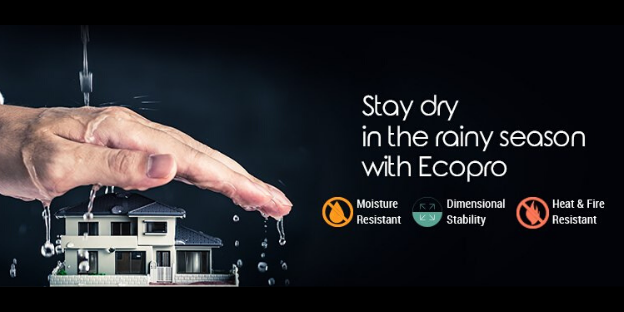A roof is an important part of any building structure. It serves the functional purpose of providing shelter to the residents within from outside weather elements and also adds an aesthetic charm to the structure – especially the sloping roofs. So, while it’s important to take care of your roof all year long, it becomes even more critical during the monsoons. This is the time when torrential rains hit your roofs and seep in causing problems such as leakage, mildews under the roof, and dampness on the walls potentially deteriorating the strength of the structure and aging it before time. Thankfully, it’s possible to prepare your roof from coming under the weather by some simple tips from EcoPro. EcoPro is a manufacturer of moisture-resistant and eco-friendly Fibre cement boards that are used for various structural applications such as roof underlays, roof decks, to even a false ceiling for hall.
Check the shingles
Those overlapping tiles placed on your roof are called shingles. Many times, we neglect the tiles or don’t pay enough attention to them. But it could be that one broken tile which can start the trickling, eventually turning it into a bigger leakage. It’s a good idea to inspect the roof for any broken tiles just as you smell monsoon approaching near. This will give you enough time to fix the issue so that you don’t have to settle for the last moment emergency patch-work. If your roof tiles are existing for a long time and have clear signs of wearing out, it is better if you replace the entire roof with a new set of tiles. They would instantly lift the value of your property too.
Roof Underlays
Roofing underlayment is a water-resistant or waterproof barrier material that is layered upon your roof deck and under the tiles. It is applied under all other roofing materials as an additional layer of protection from severe weather. Roofing underlays are available in materials such as asphalt but the ones made from Fibre cement boards are excellent at water resistance and protect all roofing components from getting soaked even during torrential rains.
Look for leakage signs on ceilings and walls
Each time there is a heavy downpour washing out your property, you might find moist spots around your house, typically in the most exposed area of the wall or just below the ceiling. What may seem like a small leak at the beginning may eventually grow into a bigger one after back to back rains if the exact issue leading to the leakage is not addressed on time. If you find moist spots on the walls that are not traceable to the roof, then it could be an issue of the wall itself. In such cases, you need to get them inspected by an expert and get them repaired. A permanent solution in such a case would be to apply a water-resistant Fibre cement sheet over your wall surface that comes in different variations such as tiles and wall panels. They not only protect the surface from water but also give an aesthetically pleasing look to the walls. For taller buildings, a rain screen cladding offers a relatively simple solution to the problem of keeping rainwater out. The system involves a form of double partition wall construction that uses the external wall cladding to keep out the rain and an inner layer to provide thermal insulation, prevent excessive air leakage, and carry wind loading.
If you are looking for waterproofing solutions for your house or want to know your prospects well before you begin with the construction of a new one, contact EcoPro today and learn how fibre cement boards can fit your needs!


